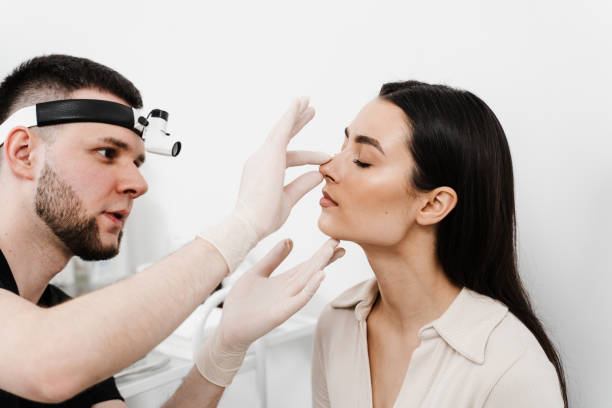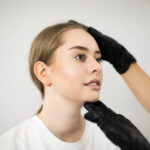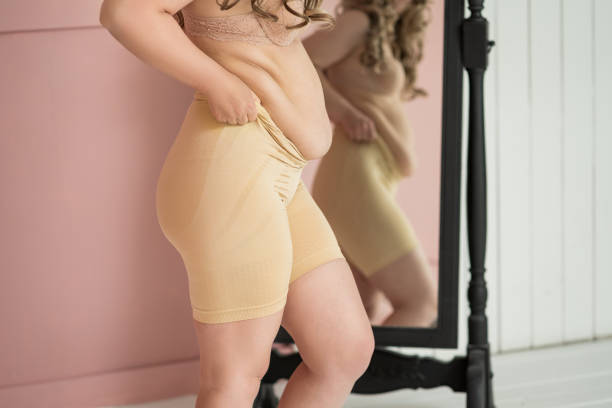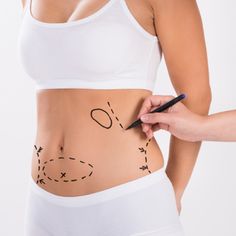
by enfieldroyalsaudi049 | Aug 4, 2025 | Health
Understanding Liposuction and Its Purpose
Liposuction is a popular cosmetic procedure designed to remove stubborn fat deposits that do not respond well to diet and exercise. It targets specific areas like the abdomen, thighs, arms, and neck to improve body contour and help individuals achieve a more toned and sculpted figure. While liposuction can dramatically enhance your appearance, it is not a weight-loss method but rather a body contouring treatment to refine your natural shape.
Why Consider Liposuction in Riyadh?
If you’re exploring options to shape your body, Liposuction in Riyadh stands out as a trusted choice due to the availability of advanced techniques and skilled surgeons in the region. Furthermore, it offers a chance not only to enhance physical appearance but also to boost self-confidence and overall well-being. Before considering the procedure, however, it is essential to determine if you are an ideal candidate to ensure the best results and minimize risks.
Key Traits of an Ideal Candidate for Liposuction
Stable and Near Ideal Body Weight
One of the primary criteria for being a good candidate for liposuction is to be close to your ideal body weight. Typically, candidates should be within about 20-30% of their target weight. Liposuction is best suited for individuals who want to remove localized fat pockets rather than those aiming for significant weight loss. Maintaining a stable weight prior to surgery helps ensure the longevity of the results since substantial weight fluctuations can compromise your surgical outcome.
Good Skin Elasticity
For optimal results, candidates should have firm and elastic skin that can adjust smoothly to the body’s new contours after fat removal. Skin elasticity means your skin “snaps back” instead of sagging, which contributes to natural-looking results. Older patients or those with stretched, loose skin due to weight loss or pregnancy may require additional skin tightening procedures to complement liposuction.
Good Overall Health and Medical Clearance
Candidates must be in good general health to safely undergo surgery and anesthesia. Chronic illnesses such as uncontrolled diabetes, heart disease, or respiratory issues can increase risks and complicate recovery. A thorough medical evaluation is essential to ensure you are fit for the procedure. Additionally, nonsmokers or those willing to quit smoking before and after surgery have better healing outcomes and lower complication risks.
Realistic Expectations
Having a positive outlook accompanied by realistic goals is crucial before undergoing liposuction. The procedure enhances body contours but does not radically alter your entire body shape or resolve obesity. Understanding what liposuction can and cannot do helps you align expectations with achievable results, avoiding disappointment after surgery.
Targeted Fat Deposits Resistant to Diet and Exercise
Candidates often seek liposuction for stubborn fat pockets that are resistant to conventional weight loss methods. These fatty areas can be genetic or lifestyle-related, commonly found on the abdomen, flanks, thighs, arms, and neck. If you’re frustrated with persistent fat despite a healthy lifestyle, liposuction specifically targets these trouble zones for effective contouring.
Additional Considerations for Liposuction Candidates
Commitment to a Healthy Lifestyle
Candidates should maintain an active lifestyle and balanced nutrition before and after the procedure to maximize and preserve results. Liposuction is not a substitute for healthy habits but rather a complement to them. Post-operative diet and exercise help prevent new fat accumulation and support long-term satisfaction.
Age and Skin Condition
Age does not directly disqualify someone from liposuction, but it can affect skin elasticity and healing speed. Younger candidates typically have better skin resilience, which improves contour results. However, older patients can still benefit with proper skin tightening techniques or combined surgeries if needed.
Mental and Emotional Readiness
Good mental health and emotional stability are important factors. Candidates should be psychologically prepared to undergo surgery and recovery. Having realistic expectations includes being ready for gradual results and possible multiple treatments depending on the area treated and individual response.
Why Choose Liposuction in Riyadh?
Riyadh offers access to advanced liposuction techniques including traditional suction-assisted, laser-assisted, and ultrasound-assisted options. These technologies increase precision, reduce trauma, and often speed up recovery, contributing to smoother skin appearance post-procedure. Clinics in Riyadh prioritize personalized care, taking into account patients’ cultural and individual aesthetic preferences.
The Importance of a Proper Consultation
A thorough consultation with a qualified surgeon is essential to evaluate your candidacy for liposuction. The doctor will assess your health status, skin elasticity, fat distribution, and lifestyle. They will also discuss your goals and explain surgical options tailored to your needs, ensuring you have a clear understanding of what to expect before, during, and after the procedure.
FAQs
★ What weight range is best for liposuction?
Ideal candidates are usually those who are within 20-30% of their ideal body weight with stable weight prior to the procedure.
★ Can liposuction help with loose or saggy skin?
Liposuction primarily removes fat, so good skin elasticity is necessary. For loose skin, additional procedures like skin tightening may be recommended.
★ Is age a limiting factor for liposuction?
Age does not disqualify you, but skin quality and overall health must be considered to optimize results.
★ Do I need to quit smoking before liposuction?
Yes, quitting smoking reduces risks of complications and improves healing after surgery.
★ What areas of the body can liposuction target effectively?
Common areas include the abdomen, thighs, arms, neck, and flanks where fat tends to resist diet and exercise.
Final Thoughts
Determining if you are an ideal candidate for liposuction involves evaluating your body weight, skin condition, overall health, and mental readiness. If you meet these key criteria and have realistic expectations, Liposuction in Riyadh can be a safe and effective way to remove unwanted fat and enhance your body contours. With the right approach, liposuction offers both physical transformation and a boost in confidence that lasts.

by enfieldroyalsaudi049 | Jul 31, 2025 | Health
Introduction
The shape and structure of your nose play a crucial role in defining the overall aesthetics of your face. A well-proportioned nose complements your other features, creating balance and harmony that can enhance your appearance and boost your confidence. Many people seek surgical options to refine their nose and improve their facial profile. Among these, rhinoplasty stands out as a highly effective procedure that can achieve dramatic yet natural-looking transformations.
Understanding the Impact of Rhinoplasty in Riyadh
Rhinoplasty in Riyadh offers a transformative solution for individuals looking to enhance their facial profile. This procedure not only reshapes the nose but also balances the proportions of your face, creating improved harmony between features such as the cheeks, eyes, and chin. By making subtle or more noticeable adjustments—whether to the nasal bridge, tip, or nostrils—rhinoplasty can improve your appearance in ways that go beyond just the nose itself. The benefits extend to boosting self-esteem, improving social interactions, and refining your self-image.

The Nose as a Central Facial Feature
Your nose sits at the center of your face, which means even small changes can drastically affect your overall look. A rhinoplasty can reduce prominent humps or bumps, refine a bulbous tip, narrow wide nostrils, or correct asymmetries, leading to a more balanced and aesthetically pleasing profile. These adjustments help the entire face tell a more cohesive and attractive story, making the procedure impactful yet subtle.
The Multifaceted Benefits of Rhinoplasty
Enhancing Facial Harmony and Balance
Rhinoplasty is designed to create better facial symmetry by aligning the nose’s shape, size, and position with your unique facial features. Enhanced facial harmony means your nose complements your cheekbones, lips, and chin, improving the visual flow of your face. This balance can make your looks more striking and appealing, elevating your overall attractiveness and facial expression.
Boosting Self-Confidence and Psychological Well-being
Many patients notice a significant increase in self-confidence following rhinoplasty. Correcting perceived nasal imperfections can relieve feelings of insecurity and promote a positive self-image. This mental shift often results in improved social engagement and personal interactions, empowering you to showcase your best self with renewed assurance.
Improving Nasal Functionality and Breathing
Beyond aesthetics, rhinoplasty frequently addresses functional issues such as a deviated septum or nasal blockage. Correcting these problems at the same time as cosmetic changes can dramatically enhance breathing, reduce snoring, and improve sleep quality. This combination of aesthetic and functional improvement contributes to better overall health and quality of life.
The Rhinoplasty Procedure: What to Expect
Initial Consultation and Personalized Planning
An essential first step is a comprehensive consultation where your surgeon evaluates your nasal structure, discusses your aesthetic goals, and plans the procedure tailored specifically to your face. This personalized approach ensures results that align with your vision while maintaining natural proportions and functionality.
Surgical Techniques and Recovery
Rhinoplasty techniques vary based on patient needs and may involve reshaping the nasal bones, cartilage, or soft tissues. Procedures typically take several hours and use either an open or closed surgical approach. Post-surgery, patients can expect some swelling and mild discomfort that gradually subsides over weeks. Visible improvements become noticeable as healing progresses, usually within months.
Long-Term Results and Care
Once fully healed, rhinoplasty results are permanent and continue to enhance facial harmony for a lifetime. Post-operative care includes protection from sun exposure, gentle cleansing, and regular follow-ups. Adhering to these guidelines helps ensure the longevity and success of the procedure.
Addressing Common Concerns and Misconceptions
Is Rhinoplasty Only for Cosmetic Reasons?
While often sought for aesthetic enhancement, rhinoplasty also has significant functional benefits. Many patients achieve improved breathing and relief from nasal obstructions alongside improved appearance.
Will My Nose Look Natural?
Modern rhinoplasty techniques emphasize subtlety and natural proportions, aiming for results that complement your unique facial features rather than look surgically altered.
Am I a Good Candidate?
Ideal candidates are healthy adults with realistic expectations, sufficient nasal tissue for adjustment, and no active infections or medical contraindications.
Lifestyle Benefits Beyond Appearance
A refined nasal profile can facilitate easier makeup application by creating smoother contours and balanced proportions. Additionally, those who experienced breathing difficulties before surgery often find increased energy levels and better athletic performance, contributing to an overall enhanced lifestyle.
FAQ’s
❓ What is the recovery time after Rhinoplasty in Riyadh?
Recovery typically involves swelling and bruising lasting a few weeks, with most patients resuming normal activities within 1-2 weeks, and full healing visible after several months.
❓ How soon will I see the final results of rhinoplasty?
Initial improvements appear as swelling reduces in the first few weeks, but the final shape often takes 6 to 12 months to fully refine.
❓ Can rhinoplasty correct breathing problems?
Yes, rhinoplasty can address structural issues like a deviated septum, improving airflow and nasal function.
❓ Does rhinoplasty leave visible scars?
Depending on the technique used (open vs. closed), any scars are typically minimal and well-hidden within natural creases.
❓ Is rhinoplasty safe and suitable for all ages?
Rhinoplasty is generally safe for adults with fully developed facial structures; suitability varies per individual and should be determined in consultation.
Embrace a New Facial Harmony with Rhinoplasty
Choosing Rhinoplasty in Riyadh means investing in a treatment that not only reshapes your nose but can profoundly transform your facial profile and boost your confidence. With experienced surgeons and advanced techniques, Riyadh is a hub for those seeking natural, lasting, and life-enhancing results.

by enfieldroyalsaudi049 | Jul 26, 2025 | Health
Introduction
Many people struggle with body image due to excess abdominal skin and fat, often caused by pregnancy, weight loss, or aging. These concerns can lead to decreased self-confidence and dissatisfaction with appearance. A surgical procedure known as a tummy tuck offers a solution that improves both physical appearance and emotional well-being. This article explores the transformative impact of a tummy tuck, focusing on how it can restore your confidence and enhance your body image in a meaningful way.
Understanding the Power of Tummy Tuck in Riyadh
A Tummy Tuck in Riyadh is not just about achieving a flatter, firmer abdomen; it’s about reclaiming your self-esteem and feeling comfortable in your own skin once again. This procedure removes excess skin and tightens underlying muscles, resulting in a toned midsection that many individuals find life-changing. As the physical transformation takes shape, the psychological benefits become evident—leading to improved confidence and a renewed sense of self-worth.
How a Tummy Tuck Enhances Self-Confidence
Physical Appearance and Body Image
The body and mind are deeply interconnected. When you feel better about your body, it naturally elevates your self-perception. Excess abdominal skin and fat often prevent individuals from feeling attractive or confident in clothing. Post-tummy tuck, patients frequently report an enhanced ability to wear fitted clothes and engage socially without self-consciousness. This change allows for a greater willingness to participate in activities that were once avoided, fostering social openness and a positive mindset.
Psychological Transformation
Beyond aesthetics, a tummy tuck fosters an emotional uplift. Many patients experience less anxiety about their appearance and a stronger sense of control over their bodies. This psychological boost can reduce social inhibition and empower patients to pursue new professional and personal opportunities with greater assurance. Realistic expectations set prior to surgery are essential, helping patients embrace their new look with an authentic and prepared mindset.
The Lasting Benefits of a Tummy Tuck
Permanent Physical Improvements
Unlike temporary methods, a tummy tuck provides long-lasting results by surgically removing excess tissue and tightening muscles. This permanency helps maintain confidence over time because patients know their transformation is stable. The procedure can also improve posture and reduce discomfort caused by loose skin or weakened abdominal muscles, benefiting both appearance and physical health.
Motivation to Maintain a Healthy Lifestyle
Achieving a sculpted abdomen often inspires patients to adopt healthier habits including better nutrition and regular exercise. This motivation cultivates a positive cycle: the more you take care of your body, the more confidence you gain. This holistic health focus strengthens both body and mind, enhancing overall well-being beyond mere appearance.
What to Expect from Your Tummy Tuck Journey in Riyadh
Initial Consultation and Preparing Mentally
The journey begins with a detailed consultation where specialists assess your goals and evaluate whether a tummy tuck aligns with your needs. Mental readiness is emphasized—patients are encouraged to have a strong support network and realistic outlook on potential outcomes to optimize satisfaction.
Recovery and Emotional Adjustment
After the procedure, it’s normal to experience some physical discomfort while healing takes place. Emotional shifts also occur during recovery—patients often move from anticipation and anxiety to excitement and pride as visible changes develop. Supportive care and follow-up appointments help navigate this process.
Frequently Asked Questions About Tummy Tuck in Riyadh
❓ How soon will I notice improvements in my confidence after the surgery?
Many patients feel a positive change in self-confidence shortly after the initial healing phase as their abdominal contour improves, with ongoing boosts as swelling decreases and final results appear.
❓ Can a tummy tuck improve my posture and reduce back pain?
Yes, by tightening abdominal muscles and removing excess skin weight, a tummy tuck can enhance posture and alleviate some back discomfort caused by weak core muscles.
❓ Is the mental health benefit from a tummy tuck long-lasting?
Studies and patient testimonials indicate that the improvements in self-esteem and overall mental well-being can be sustained long-term, especially when paired with healthy lifestyle habits.
❓ What psychological preparation should I consider before the procedure?
It’s important to set realistic expectations, understand the recovery process, and ensure you have emotional support to manage the range of feelings before and after surgery.
❓ Will my clothing options change after a tummy tuck?
Many patients experience greater freedom in wardrobe choices, enjoying fitted and fashionable clothing styles that were previously uncomfortable or avoided due to body insecurities.
Embrace the Confidence Boost with a Tummy Tuck in Riyadh
Choosing a Tummy Tuck in Riyadh offers more than physical transformation—it provides a pathway to improved self-esteem, emotional strength, and everyday happiness. The combination of surgical expertise and patient-centered care available in Riyadh ensures a rewarding experience for those ready to take control of their confidence and body image.
Final Thoughts
When body concerns impact your confidence and quality of life, a tummy tuck can be a powerful solution that revitalizes how you feel inside and out. The emotional benefits are just as significant as the cosmetic improvements, marking a new chapter of self-assurance and well-being. Embark on your tummy tuck journey in Riyadh and discover how this procedure can transform not only your body but your entire outlook.

by enfieldroyalsaudi049 | Jul 26, 2025 | Health
Introduction
Facial aging can affect one’s confidence, self-image, and overall quality of life. In Riyadh, where modern lifestyles and social expectations highlight the importance of youthful looks, many people are considering facial rejuvenation procedures. This comprehensive guide will explore the key signs that suggest you might be an ideal candidate for a facelift, with a focus on helping you understand if this transformative step aligns with your goals, health, and expectations.
Understanding the Appeal of a Facelift
Facelifts remain one of the most effective solutions for reversing visible signs of aging. More people are researching their options for Facelift in Riyadh because it offers lasting improvements that go far beyond what non-surgical treatments can achieve. By lifting, tightening, and reshaping your facial contours, a facelift can help restore a vibrant and refreshed appearance.

Common Signs You May Be Ready for a Facelift
Noticeable Sagging and Skin Laxity
If you see visible sagging around the cheeks, jawline, or neck that makeup and skincare can’t conceal, it may be a sign that nonsurgical solutions are no longer effective. A facelift addresses skin laxity and repositions underlying tissues, offering a firmer, more youthful look.
Deep Wrinkles, Folds, and Jowls
Persistent and deep facial folds—such as nasolabial lines, marionette lines, and jowls—signal changes beneath the skin surface. These are often best treated by surgical lifting, which delivers more dramatic results than fillers or other injectables.
Loss of Jawline or Neck Definition
If the contours of your face—especially the jawline and neck—have become less defined, with extra skin or “bands” beneath the chin, a facelift can restore a youthful shape by tightening tissues and removing excess skin.
Non-Surgical Treatments Are No Longer Effective
Those who have relied on fillers, Botox, or laser therapies may notice that results become less noticeable over time. If you find yourself seeking more frequent touch-ups with limited improvement, surgical intervention like Facelift in Riyadh could offer a longer-lasting, natural result.
Good Overall Health and Lifestyle
Good candidates are generally in sound physical health, free from serious medical conditions that could impact healing. Non-smokers, or those willing to quit before and after surgery, experience better recovery. Maintaining a stable weight is also important—significant fluctuations after surgery can affect results.
Realistic Expectations and Emotional Readiness
Having clear, realistic expectations is vital. A facelift can rejuvenate your appearance, but it won’t change fundamental facial features or stop the aging process altogether. Psychological readiness and a positive outlook lead to smoother recovery and greater satisfaction.
Are You a Candidate? Key Suitability Factors
Age Considerations
Candidates usually range between their 40s and 70s, though the suitability is more about skin quality, health, and appearance rather than age alone. The best outcomes occur when the skin still retains some flexibility and elasticity.
Skin Elasticity
Skin that stretches well but is now loose or sagging is ideal for a facelift. Good elasticity ensures smoother, longer-lasting results.
Bone Structure Support
Prominent cheekbones or a well-defined jawline support better facelift results. The underlying bone structure helps shape natural, attractive outcomes.
Stable Weight
Maintaining a consistent weight ensures results look natural and prevents sagging or irregularities after surgery. Significant future weight changes can impact your rejuvenated appearance.
Scar Tendency
If you have a history of keloid or problematic scarring, be sure to discuss this in your consultation, as it may affect healing.
Evaluating Your Readiness: Consultation and Assessment
Personalized Assessment Process
A key step in determining candidacy for a Facelift in Riyadh is a detailed consultation with a skilled medical professional. During this evaluation, your health, facial anatomy, skin condition, goals, and medical history will be assessed for safety and suitability.
Psychological and Social Factors
It’s important to consider your motivation for pursuing a facelift. Are you doing it for yourself? Do you have a support system for the recovery phase? A positive, realistic mindset is crucial for healing and enjoying results.
Benefits of Being a Good Facelift Candidate
More Predictable, Satisfying Results
When you meet established candidacy criteria, you’re more likely to enjoy natural, symmetrical, and pleasing outcomes. Surgeons can adapt the procedure to enhance your features and deliver a refreshed but recognizable you.
Lower Risk of Complications
Healthy candidates who maintain good habits—like not smoking and controlling chronic health conditions—tend to recover more quickly with fewer side effects. Recovery is smoother and more comfortable when your body is ready for surgery.
Long-Lasting Improvements
A suitable candidate will benefit from longer-lasting outcomes, often enjoying results for many years with continued good skincare and a healthy lifestyle.
The Next Steps: What to Expect During Consultation
Open Communication with Your Surgeon
Share your goals, medical history, lifestyle, and any concerns openly. This helps create a personalized plan for your Facelift in Riyadh and sets realistic expectations while minimizing risks.
Examination and Imaging
A thorough physical exam, sometimes with photographic imaging, allows the specialist to recommend the right technique for your needs and review potential outcomes. This process ensures your individualized treatment plan addresses your unique goals.
Exploring Options and Alternatives
Sometimes, non-surgical options or complementary procedures (like eyelid lifts or skin resurfacing) may be discussed. The consultation is your opportunity to explore all avenues, ask questions, and feel confident in your decision.
Life After a Facelift: Recovery and Maintenance
Typical Recovery Experience
Most patients experience mild swelling, bruising, and discomfort, typically resolving within a few weeks. Following detailed aftercare instructions will support optimal healing.
Long-Term Care
Taking care of your skin, wearing sun protection, and maintaining healthy habits will help you maintain your refreshed appearance for longer.
Uniquely Highlighted FAQ Section
💡 Am I too young or too old for a facelift?
Facelifts are typically performed on individuals in their 40s–70s, but suitability depends on skin condition and health, rather than age alone. If you have significant sagging and good health, you may be a candidate even outside this range.
💡 Can I have a facelift if I’ve had fillers or other procedures before?
Yes, many candidates have previously used fillers or undergone nonsurgical treatments. If those methods no longer deliver your desired results, a facelift may offer more significant and lasting improvements.
💡 What is the recovery time like after a facelift?
Recovery typically involves 1–2 weeks of swelling and bruising. Following your surgeon’s instructions closely speeds up healing and ensures the best results. Light activities can often be resumed within days, with complete healing taking a few weeks.
💡 How natural will my results look?
When performed by an experienced specialist in Facelift in Riyadh, results can look exceptionally natural. The goal is a refreshed, more youthful version of yourself, not an artificial or “overdone” appearance.
💡 How do I know if I’m psychologically ready for surgery?
Ask yourself if you have realistic expectations and if you’re seeking the procedure for your own confidence and well-being. Emotional readiness is just as important as physical health for a positive facelift experience.
Conclusion
Choosing a Facelift in Riyadh can be a life-changing decision, especially if you match the classic signs of a good candidate—noticeable sagging, deep wrinkles, loss of facial definition, and realistic expectations. With a personalized consultation, expert guidance, and a commitment to healthy living, you can achieve the vibrant, natural-looking results you desire and feel renewed confidence for years to come.

by enfieldroyalsaudi049 | Jul 25, 2025 | Health
Introduction
Undergoing liposuction can be a transformative experience, helping many reshape their bodies and boost confidence. However, ensuring safety during and after the procedure is crucial for achieving the best outcomes. For those considering Liposuction in Riyadh, understanding safety guidelines and risk minimization strategies is an essential part of the decision-making process. This blog will guide you through the most important safety measures, helping you feel informed and confident as you explore liposuction options.
What Is Liposuction and Why Safety Matters
Liposuction is a cosmetic surgical procedure that removes stubborn fat deposits to sculpt and contour the body. While it offers significant aesthetic benefits, it is still surgery and carries potential risks like any medical intervention. Strict adherence to safety guidelines minimizes complications such as infection, bleeding, or uneven results. In Riyadh, where Liposuction in Riyadh is growing in popularity, clinics follow advanced protocols to ensure patient safety and satisfaction.
Pre-Procedure Safety Guidelines
Patient Selection and Health Assessment
One of the most important aspects of liposuction safety is careful patient selection. Ideal candidates for Liposuction in Riyadh are generally healthy individuals who maintain a stable weight and have realistic expectations. Medical history reviews help identify any underlying conditions that could increase surgical risks, such as heart, lung, or metabolic diseases. This comprehensive evaluation helps tailor the procedure to each patient’s unique health status, reducing the likelihood of complications.
Consultation and Informed Consent
A thorough consultation allows the specialist to assess your body areas, discuss desired outcomes, and explain the procedure’s risks and benefits. Understanding what liposuction can and cannot achieve sets realistic expectations. This consultation phase also covers preoperative instructions, such as avoiding certain medications or supplements that could increase bleeding risks.
During the Procedure: Key Safety Practices
Anesthesia and Surgical Environment
Liposuction in Riyadh is typically performed under local anesthesia with sedation or general anesthesia, depending on the extent of fat removal. Using anesthesia safely requires a skilled anesthesiologist to monitor vital signs and manage comfort. The procedure is conducted in accredited surgical facilities that adhere to sterilization and infection-control protocols, providing a safe environment.
Advanced Techniques and Technology
Modern liposuction utilizes refined techniques such as tumescent, ultrasound-assisted, and laser liposuction, which reduce tissue trauma and facilitate smoother fat removal. These methods enhance precision, shorten surgery duration, and minimize patient discomfort. Their usage in Riyadh contributes significantly to maximizing results while prioritizing patient safety.
Post-Procedure Safety Guidelines
Careful Wound Management
Immediately after liposuction, keeping incision sites clean and dry is critical to prevent infections. Patients are advised to follow wound care instructions diligently, including applying any prescribed ointments and changing dressings as directed.
Compression Garments and Swelling Control
Wearing recommended compression garments supports skin retraction, reduces swelling, and improves contour outcomes. These garments also help reduce the risk of fluid accumulation known as seroma, a common minor complication. Additionally, using ice packs can alleviate swelling and discomfort when applied properly.
Activity Restrictions and Recovery
Patients should avoid strenuous activities and heavy lifting for several weeks to facilitate healing. Slowly resuming light exercises under medical guidance promotes circulation and reduces blood clot risks. Proper rest, hydration, and a balanced diet rich in nutrients enhance the body’s recovery capacity and overall well-being.
Potential Risks and How to Minimize Them
Common Minor Risks
Minor complications include temporary swelling, bruising, and numbness in treated areas. These symptoms usually resolve within a few weeks when proper care is taken. Following all aftercare instructions and scheduling regular follow-up visits helps address any emerging concerns promptly.
More Serious but Rare Risks
Though infrequent, serious risks such as infection, bleeding, contour irregularities, deep vein thrombosis, or pulmonary embolism can occur. These are minimized by selecting qualified surgeons, ensuring proper perioperative monitoring, and maintaining sterile environments. Early detection and treatment of complications are vital for patient safety.
Choosing a Qualified Surgeon and Clinic
Selecting an experienced, board-certified plastic surgeon is the most important decision for safety in Liposuction in Riyadh. A qualified surgeon follows international safety standards, uses advanced equipment, and individualizes treatment plans. Many Riyadh clinics have state-of-the-art surgical facilities with multidisciplinary teams skilled in managing complications and optimizing care throughout the patient journey.
Long-Term Safety and Maintenance
Safety does not end with recovery. Maintaining a healthy lifestyle—including balanced nutrition, regular exercise, and avoiding smoking—is essential to sustaining liposuction results and overall well-being. Staying in touch with your medical provider for routine check-ups ensures early intervention if any issues arise.
Frequently Asked Questions About Liposuction in Riyadh
❓ What should I expect during the initial consultation for liposuction?
The consultation involves a detailed health assessment, discussion of your aesthetic goals, explanation of the procedure, and setting realistic expectations. Your surgeon will evaluate your suitability for Liposuction in Riyadh and outline personalized safety measures.
❓ How do surgeons minimize infection risks during liposuction?
Surgeons use sterile techniques, properly disinfect equipment, maintain a clean surgical environment, and prescribe antibiotics when necessary. Following post-surgical wound care instructions further helps prevent infections.
❓ What are the signs of complications I should watch for after liposuction?
Watch for excessive swelling, redness, unusual pain, fever, or discharge from incision sites. If these signs occur, contact your medical provider immediately to evaluate and treat any problems.
❓ How soon can I resume normal activities following liposuction?
Most patients can resume light activities within days, but strenuous exercise and heavy lifting should be avoided for several weeks as advised by your surgeon.
❓ Is liposuction a safe procedure for everyone?
Liposuction is safe for most healthy adults but may not be suitable for individuals with significant medical conditions or those with unrealistic expectations. A thorough evaluation during consultation determines candidacy and ensures safety.







